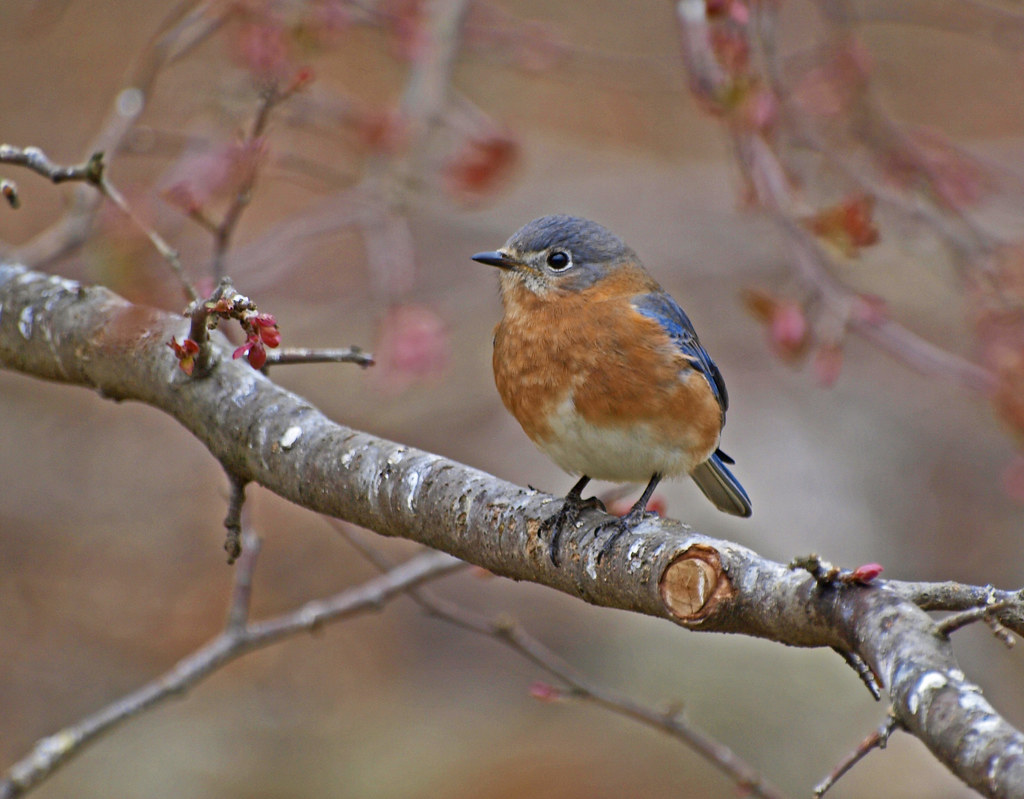
Why are bluebirds so attracted to certain trees? Bluebirds live mainly off of insects during the summer months, but in the winter, they start to seek out fruit and fruit-bearing trees. That’s why you might see a pair, or even a flock, of bluebirds hanging out around certain trees during the fall and winter – they’re looking for a good meal. But, if you’re new to attracting bluebirds to your yard, you might be wondering which types of trees are best for attracting bluebirds. So, in this article, I’ll share with you three native trees that attract bluebirds.
As a general rule, the best trees that attract bluebirds are the Flowering Dogwood, Foster Holly, and Eastern Redcedar. These trees all produce berries, which bluebirds eat when insects are scarce, and they provide bluebirds protection from the elements during harsh weather conditions. Any of these trees would be great additions to your landscape if you’re looking to attract bluebirds.
Photo above by Shannonsong is licensed under CC BY-NC-SA 2.0
In the rest of this article, I will explain why each of these trees are particularly ideal for attracting bluebirds, and I’ll also warn you about a few trees that you should avoid planting in your yard, even though bluebirds love them.
Let’s start with one of bluebirds’ favorite trees, the Flowering Dogwood.
Native Trees that Attract Bluebirds
1. Flowering Dogwood
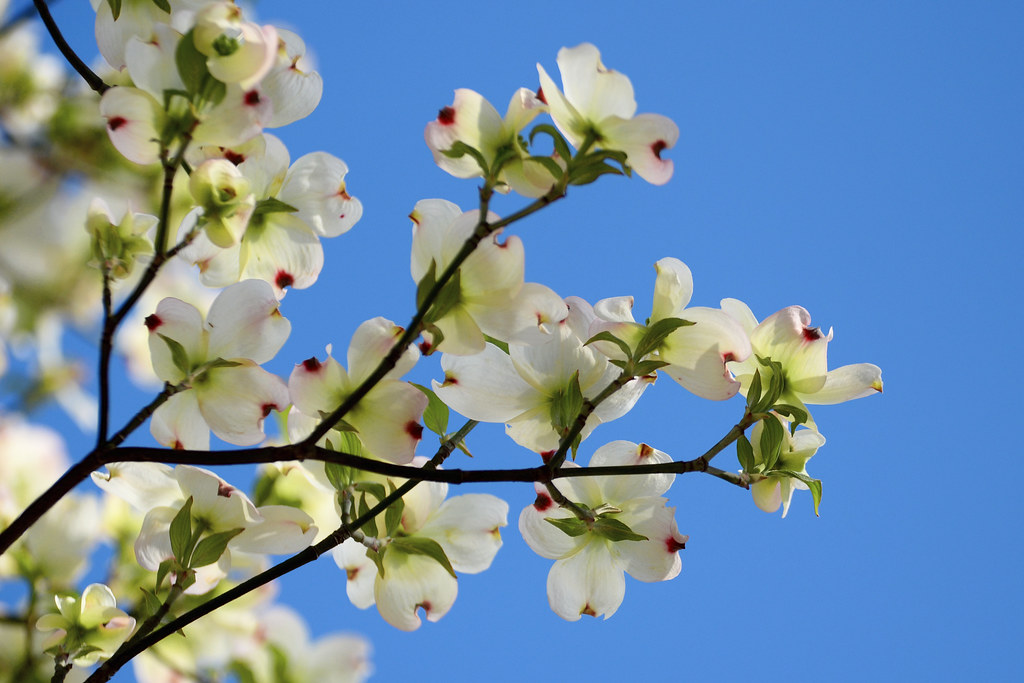
Photo by Dakiny is licensed under CC BY-NC-ND 2.0
The Flowering Dogwood (Cornus florida) is a gorgeous North American tree that offers the added benefit of attracting bluebirds to your yard. The Flowering Dogwood blossoms small white flowers in the early spring, it boasts beautiful scarlet foliage in the fall, and it grows small red berries that bluebirds love to consume once insects become scarce (source). If you add any one large tree to your landscape for the sake of bluebirds, make it a Flowering Dogwood.
Not only will the white flowers of a Flowering Dogwood announce the beginning of spring, they’ll also mark the beginning of the bluebird nesting season. This tree typically starts blooming in late March, which is a good time to spot bluebirds building their first nest of the year.
See the photo below of a Flowering Dogwood in full bloom.
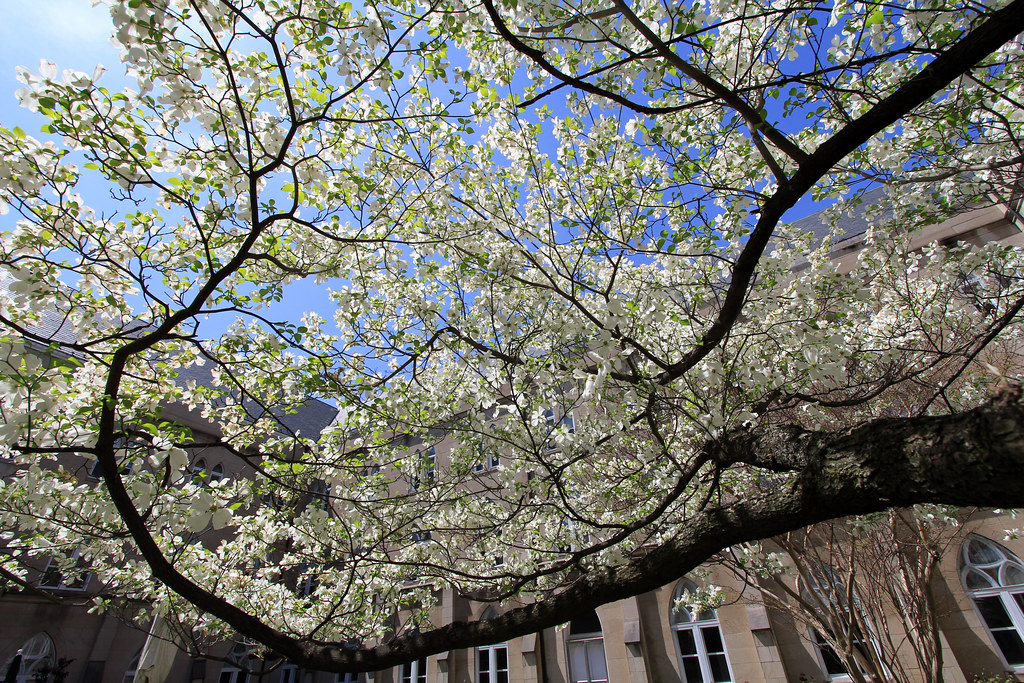
Photo by Lawrence OP is licensed under CC BY-NC-ND 2.0
Why are Flowering Dogwoods so attractive to bluebirds?
Bluebirds love to use Flowering Dogwood branches as hunting perches. While hunting, in typical bluebird fashion, they will hold still on one of the branches for a few minutes, and then swoop down in an instant to scoop up an insect. Bluebirds will continue using Flowering Dogwoods in this way throughout the spring, summer, and early fall. But when the temperatures drop, bluebirds will also start going to this tree as a source of food.
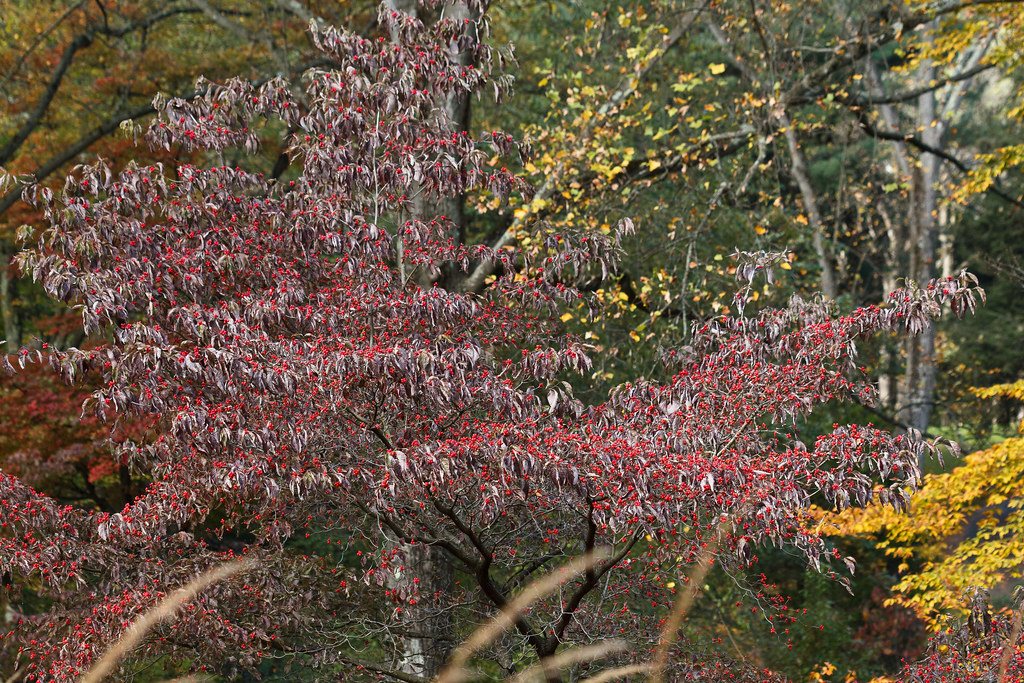
Once fall hits, the Flowering Dogwood begins producing small, oblong, red berries, which are about a half inch in length (source). Bluebirds go crazy for these berries when they can find them, as do cardinals, tufted titmice, woodpeckers, and other fruit-eating songbirds.
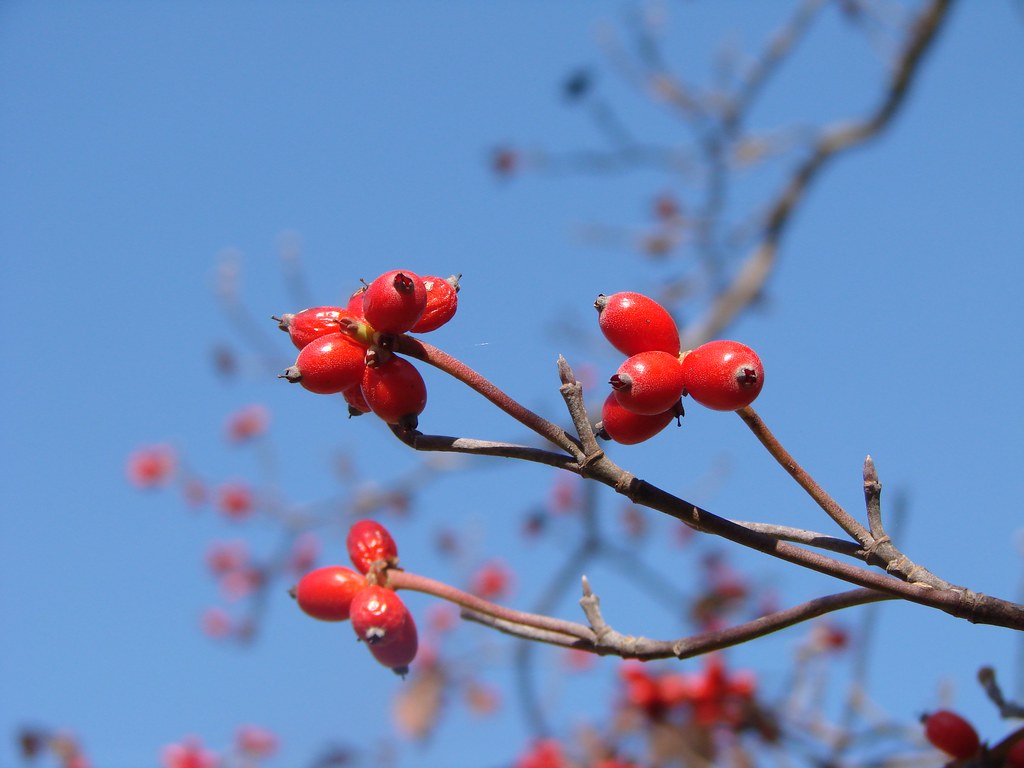
Fall is when bluebirds are most attracted to the Flowering Dogwood tree. So, once you have one of these trees in your yard, chock full of delicious red berries, you’re sure to catch the attention of some bluebirds, who will hopefully stick around for the coming nesting season.
Next on the list of native trees that attract bluebirds is the Foster Holly.
2. Foster Holly

Photo by jmlwinder is licensed under CC BY-NC-ND 2.0
The Foster Holly (Ilex x attenuata ‘Fosteri’) is a small evergreen tree that reaches up to 15-25 feet in height and has a spread of 8-12 feet at maturity. This tree produces bright red berries in the fall that are highly attractive to bluebirds. And, because of its relatively small size, the Foster Holly can work well as a hedge or an accent tree in many people’s yards (source).
Why are Foster Holly trees so attractive to bluebirds?
The main benefit of the Foster Holly tree for bluebirds is that it produces bright red berries in the fall. Bluebirds love to pluck these berries straight off the tree when they are available. Foster Holly berries start to grow in the fall, and this happens to coincide perfectly with the time when bluebirds switch from an insect-centric diet to a fruit-centric diet. Perfect timing!
In addition to flocking to these trees for their fruit, bluebirds also will sit on top of Foster Hollies in the spring and summer, using them as a place to hunt insects.
Consider adding a row of these trees to your own yard’s landscape to create a more inviting atmosphere for bluebirds.
3. Eastern Redcedar

Photo by Dendroica cerulea is licensed under CC BY-NC-SA 2.0
The next on the list of native trees that attract bluebirds is the Eastern Redcedar.
Interestingly, the Easter Redcedar is actually a juniper and not a true cedar, as evidenced in its Latin name (Juniperus virginiana). This tall, pyramid-shaped evergreen tree grows to height of 40-50 feet tall and produces small gray to blueish-green fruits (source).
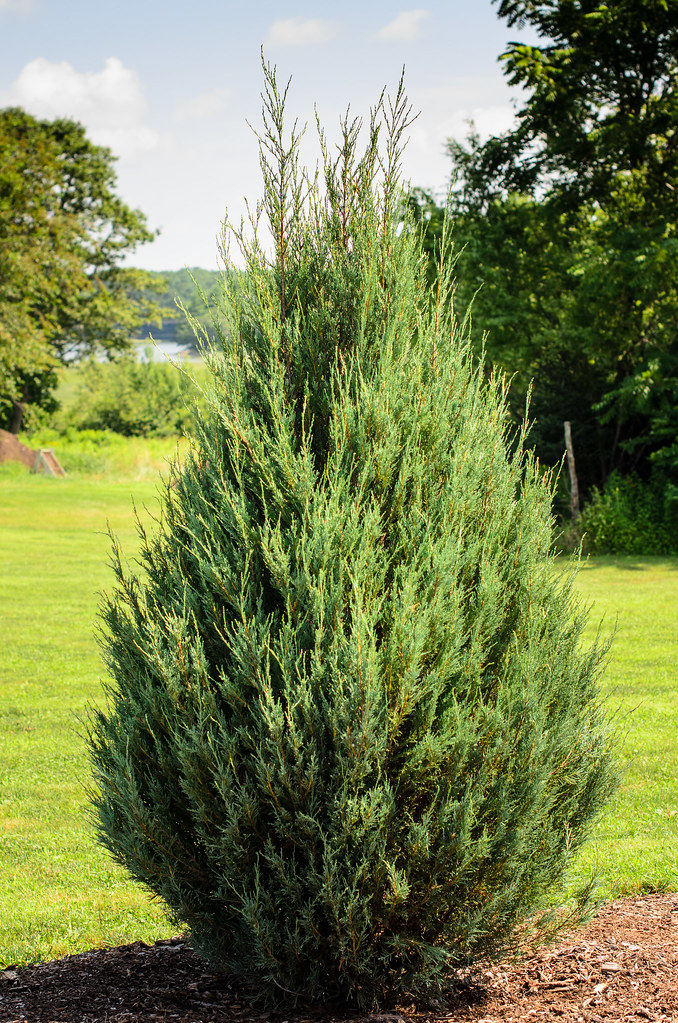
Why are Eastern Redcedars so attractive to bluebirds?
Eastern Redcedar trees are attractive to bluebirds because of the protection they provide from the elements, and because of their small, blue, berry-like fruits that come to maturity in the fall.
First, these trees provide protection from the elements. In the winter and during poor weather conditions, bluebirds seek out large trees, natural cavities, and manmade nest boxes for cover. Trees like the Eastern Redcedar are perfect hiding places when bluebirds are looking for a respite from the bad weather.
More importantly, Eastern Redcedars provide food during the the fall and winter that bluebirds can enjoy when insects are scarce. The small fruits produced by this tree are often misnamed as berries, but, according to arborday.org, the fruits are actually small cones made of fused-together cone scales (source). Whatever you call them, bluebirds love these small little fruits and they are the main reason that bluebirds flock to this tree.
If you can manage to add one or more Eastern Redcedars to your landscape, bluebirds will definitely appreciate it.
Now that we’ve covered three of the best native trees that attract bluebirds, let’s look at a few non-native tree species that attract bluebirds as well.
Trees to Avoid, Even Though Bluebirds Like Them
Just like native fruit-bearing trees, there are many non-native (invasive) plant species that bluebirds are also attracted to. A few invasive trees that are worth mentioning are the Bradford Pear, the Chinese Tallow Tree, and the Autumn Olive tree. Bluebirds love these trees, and their fruits are technically not even harmful to bluebirds. Even so, because these trees are invasive species, you should still avoid planting them in your yard.
When you’re looking for fruit-bearing trees that attract bluebirds, stick to the native species of trees listed above.
Conclusion
Because bluebirds love to eat fruit in the fall and winter, there are plenty of fruit-bearing trees that bluebirds love. The three best trees that attract bluebirds are the Flowering Dogwood, the Foster Holly, and the Eastern Redcedar. If you’re looking to attract bluebirds to your yard, consider adding any of these trees to your back or front yard’s landscape.
If a tree seems like to big of a commitment, there are plenty of smaller plants that you can add to your landscape that will attract bluebirds as well. I’ve got another article for you that I wrote on that topic. Click here to read about seven common plants and shrubs that attract bluebirds.


